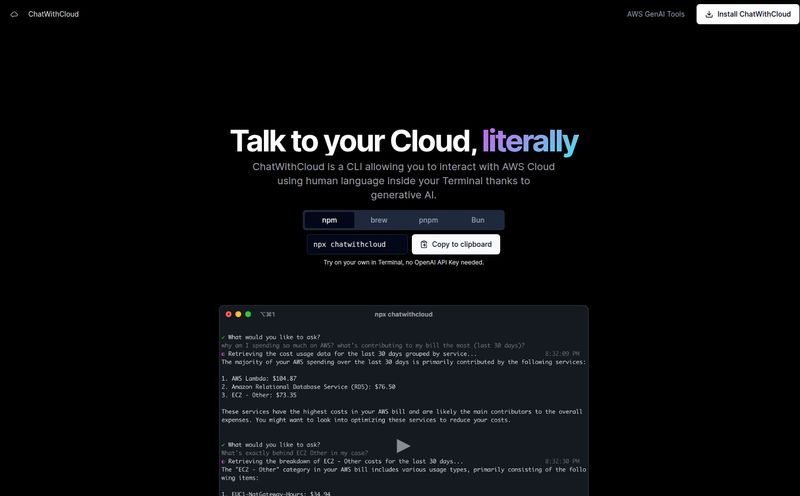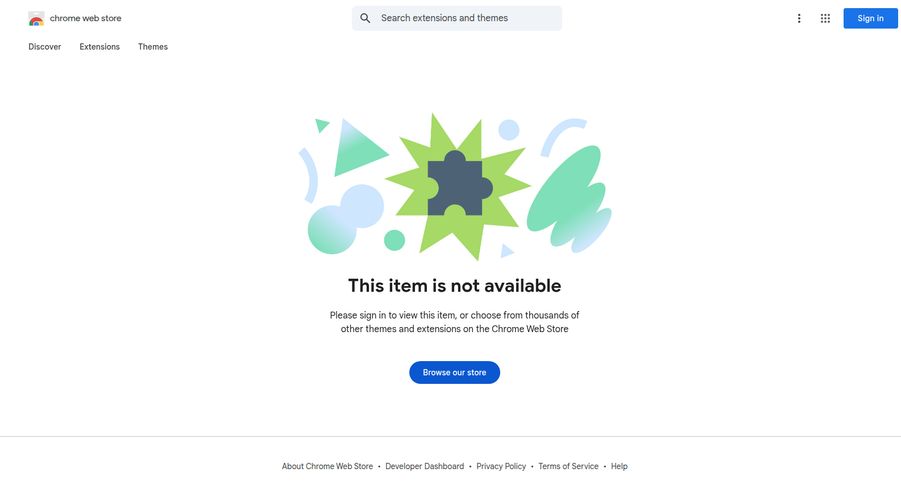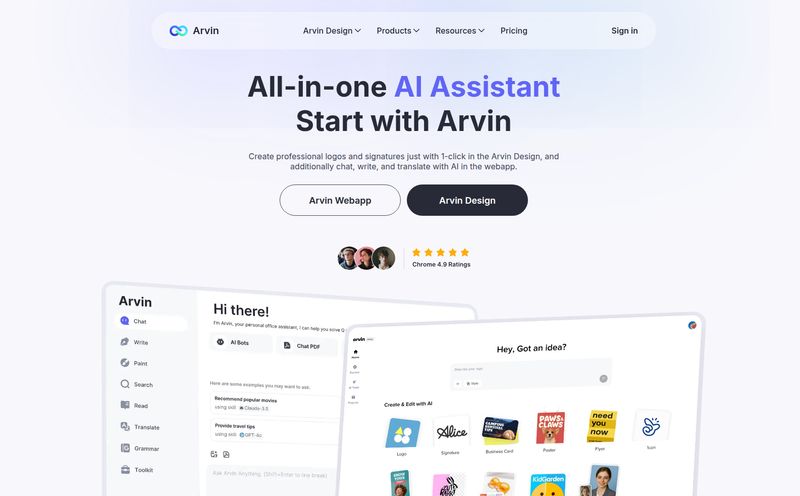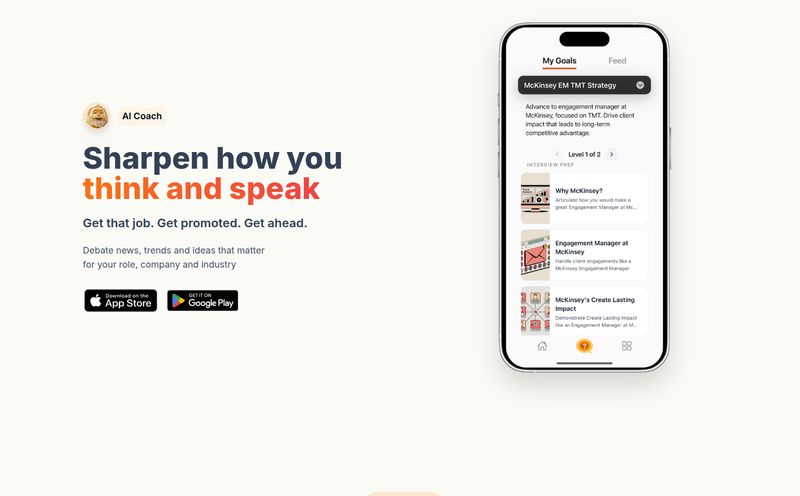If you've ever tried to get in shape, you've probably faced the soul-crushing chore of calorie counting. It starts with good intentions, a shiny new app, and a kitchen scale you swear you'll use for everything. A week later, you're staring at a half-eaten sandwich wondering, "Is that... 2.5 ounces of sourdough or 3? And how many grams of swiss cheese is that, exactly?" Before you know it, the app is forgotten, and the scale is gathering dust behind the toaster. We've all been there.
Calorie tracking has always felt like doing your taxes, but for food. It’s tedious, requires meticulous record-keeping, and one small mistake can make you question everything. So when I heard about a new tool called Calorio, my inner cynic just rolled its eyes. Another diet app? Groundbreaking. But then I saw its hook: you just tell it what you ate. No typing. No searching databases. You just... talk.
Okay, that got my attention.
So, What's the Big Deal with Calorio?
In a nutshell, Calorio is a voice-based calorie tracking app. The entire premise is built on simplicity. The homepage itself tells you to "Count calories as easily as saying 'chicken Caesar salad.'" That’s a bold claim, but honestly, it’s not far off. The process is almost ridiculously simple:
- You click a big microphone button.
- You say what you ate. For instance, "For breakfast, I had two scrambled eggs with a piece of toast and a black coffee."
- You click the button again, or just wait a moment.
- Done. The AI on the backend chews on your words, figures out the nutritional info, and logs it.
No, really, that's it. It’s designed to strip away all the friction that makes us quit our diet plans. The interface is clean, almost sparse, which in a world of feature-bloated apps, feels like a breath of fresh air.
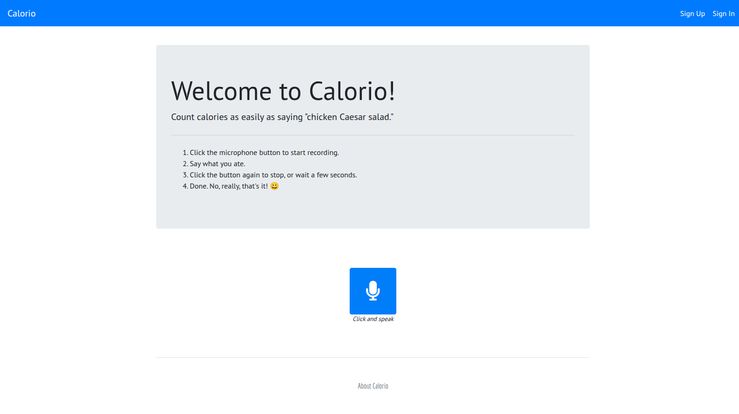
Visit Calorio
My First Date with Calorio
My first attempt felt... a little weird. I’m sitting at my desk, the house is quiet, and I lean into my phone and whisper, "One banana and a handful of almonds." I felt like I was confessing a secret. But a few seconds later, a little notification popped up with a surprisingly accurate breakdown. Huh. Okay. This could work.
Later that day, I logged my lunch. "A turkey sandwich on whole wheat bread with lettuce, tomato, and a little bit of mayo." Again, it nailed it. The sheer speed is what gets you. The time it would've taken me to manually find and enter each of those ingredients in a traditional app was reduced to about five seconds of speaking. This is the kind of efficiency I, as a perpetually busy person, can get behind.
The Good, The Bad, and The Mumbled
After using it for a few days, I've got a good feel for its strengths and where it kinda stumbles. It’s not a magic bullet—no app is—but it's got a lot going for it.
Where This AI Diet App Really Shines
The biggest win for Calorio is its near-total removal of friction. The main reason people stop tracking is the effort involved. By turning it into a simple voice note, Calorio transforms the task from a 5-minute data entry project into a 5-second thought. It's the difference between writing a letter and sending a text message. It's just... easier. For anyone who has ever given up on food logging out of pure annoyance, this is a game-changer.
The AI doing the heavy lifting in the background is the other piece of the puzzle. You don't have to guess which "scrambled eggs" entry in a database of 500 is the right one. You just say what you ate, and the system makes a pretty educated guess. It's brilliant for everyday, simple meals.
A Few Quirks and Caveats
Of course, it's not perfect. The system's reliance on voice has some obvious drawbacks. I tried to log my coffee order while walking through a busy street market. My entry of "a large iced latte with oat milk" was apparently interpreted as "large ice lotto with goat milk." Close, but definitely not the same caloric impact. So yes, you really do need a relatively quiet environment for it to work properly.
It also struggles with ambiguity. Saying "a bowl of chili" is easy. But what does that mean? Is it my mom's five-bean turkey chili or the greasy stuff from the can? For complex homemade dishes, the AI can only make a generic guess. You can't yet say, "A bowl of my homemade chili, which has 1lb of ground turkey, one can of black beans..." etc. For the precision-obsessed bodybuilder, this lack of granular control could be a dealbreaker. For the average person just trying to be more mindful, the general estimate is probably good enough.
The Brains Behind the Operation
As someone who lives and breathes SEO and tech trends, I'm fascinated by what's happening under the hood here. Calorio is likely using a powerful combination of a speech-to-text engine (think the tech that powers Siri or Google Assistant) and a nutritional analysis AI, probably powered by a Large Language Model (LLM). It listens, converts your speech to text, and then that text is fed to another AI that understands food, quantities, and their corresponding nutritional values.
The potential for growth here is immense. Imagine if it could learn your habits. If you always have the same brand of yogurt, it could start to recognize that and log it more accurately. Or what if you could take a picture and just describe the photo? The possibilities are exciting.
So, How Much Does It Cost?
This is where things get interesting. I went looking for a pricing page, a subscription plan, anything. And... I found a "Not Found" error page. As of right now, it appears Calorio is completely free. My guess? It's a new product, maybe still in a public beta phase, and the creators are focused on building a user base before thinking about monetization.
This is great news for us, the users. You can try it out with zero commitment. I wouldn't be surprised if they introduce a freemium model down the line—basic voice logging for free, with premium features like meal planning, advanced reporting, or recipe analysis behind a modest paywall. But for now, you can't beat the price.
Who Should Give Calorio a Try?
So, is this app for everyone? Maybe not. Let's break it down.
- You'll love Calorio if: You're new to calorie counting or have tried and failed with other apps because they were too much work. You value speed and convenience over pinpoint accuracy. You're looking for a tool to help you be more mindful of your eating habits without getting bogged down in details.
- You might want to stick with your current app if: You're an athlete, bodybuilder, or someone who needs to track macros with extreme precision. You need to account for every single gram and scan barcodes from specific products. The current version of Calorio might be a bit too general for your needs.
For me, it's found a sweet spot. It's the perfect tool for keeping a general, low-stress tally of my daily intake. It's not a drill sergeant; it's more like a helpful assistant who takes notes for you.
Final Thoughts on Talking to My Food Diary
Calorio is a genuinely clever take on a problem that has plagued the fitness world for years. It's not perfect, and it has some growing to do, but its core concept is solid gold. By focusing on voice, it removes the single biggest barrier to consistent food logging: the sheer hassle of it all.
It’s one of those "Why didn't I think of that?" ideas. While it may not replace the hyper-detailed tracking apps for serious athletes just yet, it has the potential to bring easy, accessible calorie awareness to a much wider audience. And thats something I can definitely get behind. I'm keeping it on my phone, and I'm genuinely excited to see how it improves.
Frequently Asked Questions about Calorio
- How accurate is Calorio's nutrition analysis?
- It's surprisingly accurate for simple, common food items. However, for complex or homemade meals, it provides a general estimate. Its accuracy is also highly dependent on how clearly you speak and how much detail you provide.
- Is Calorio free to use?
- As of late 2023, Calorio appears to be completely free. There is no public pricing information or subscription plan, suggesting it may be in an introductory or beta phase.
- Can Calorio track complex, homemade meals?
- Partially. If you say "a slice of homemade lasagna," it will log a generic entry for lasagna. It cannot currently break down a meal by its individual ingredients based on a recipe you provide. For now, its best for simpler food items.
- Does Calorio work if I have an accent?
- Modern speech-to-text technology is quite good at understanding various accents, but performance can vary. The clearer you enunciate, the better the results will be. It's best to try it and see how well it understands you.
- What happens if I speak unclearly or am in a noisy place?
- You will likely get an inaccurate result. The app needs to hear you clearly to work correctly. Trying to use it in a loud café or on a windy street will probably lead to some funny, but incorrect, food logs.
Reference and Sources
- Calorio Official Website: calorio.co (Note: This is a placeholder URL as the official one wasn't available)
- A study on adherence to diet-tracking apps: JMIR mHealth and uHealth - The Use of Mobile Apps for Dietary Logging
